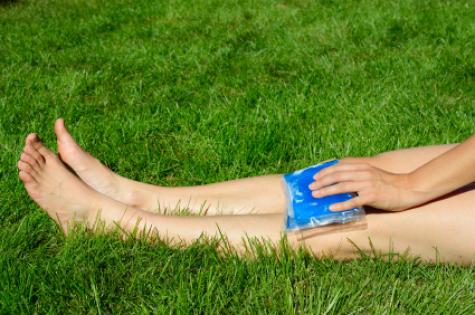With so many of us embarking on New Year's fitness regiments, how do you get and stay in shape without risking an injury such as the common anterior cruciate ligament (ACL) or other injury?
The knee has four main ligaments, including the ACL, which connect the femur (upper leg bone) to the tibia (lower leg bone).
While the ACL can rupture or tear due to a direct blow to the knee, more than 70% of these injuries do not involve contact at all, and can occur from a simple misstep. Often these injuries happen when the athlete lands in a flat-footed position, sometimes when decelerating too quickly, while the knee is straight.
The bad news is that women, who have unique knee characteristics, are three times more likely to suffer an ACL injury.
Several specific training programs are recommended for reducing ACL and ligament injury risk. They include:
- Plyometric training, which focuses on rapid, powerful movements that lengthen, and then shorten, certain muscles.
- Balance training, which typically involves the use of wobble or balance boards, or throwing and catching a ball while standing on one leg.
- Strength and stability training focuses on the appropriate way to land from a jump, and how the body should react to a sudden change in speed or direction. These exercises, which may include jumping and landing on one leg with the knee flexed and then momentarily holding that position, are designed to strengthen the muscles that affect the ACL, such as the core, gluteal, quadriceps and hamstring muscles.
Because of their high risk of injury, health experts recommend that women should learn and continue appropriate strength and stability training to prevent ACL injuries.
ACL injury prevention tips include:
- Practice Landing and Changing Direction Safely. Always keep your knees directly over your feet when jumping, landing, stopping or moving quickly. Practice jumping and landing safely and softly with your knees bent, your chest pushed forward and your buttocks pushed back.
- Strengthening Muscles. Strengthening your hip and thigh muscle can improve knee support and prevent ligament injuries. Exercises to build hip and thigh muscles include squats and lunges or the use of rubber band-type equipment.
- Warming Up and Stretching Before Exercising. Warm up to prepare to exercise, even before stretching. Run in place for a few minutes, breathe slowly and deeply, or gently rehearse the motions of the exercise to follow. Warming up increases your heart and blood flow rates and loosens up other muscles, tendons, ligaments, and joints. Begin stretches slowly and carefully until reaching a point of muscle tension. Hold each stretch for 10 to 20 seconds, then slowly and carefully release it. Do each stretch only once. Never stretch to the point of pain, always maintain control, and never bounce on a muscle that is fully stretched.
- Using Proper Equipment. Replace your workout/running/walking shoes as they wear out.

















__small.png)










